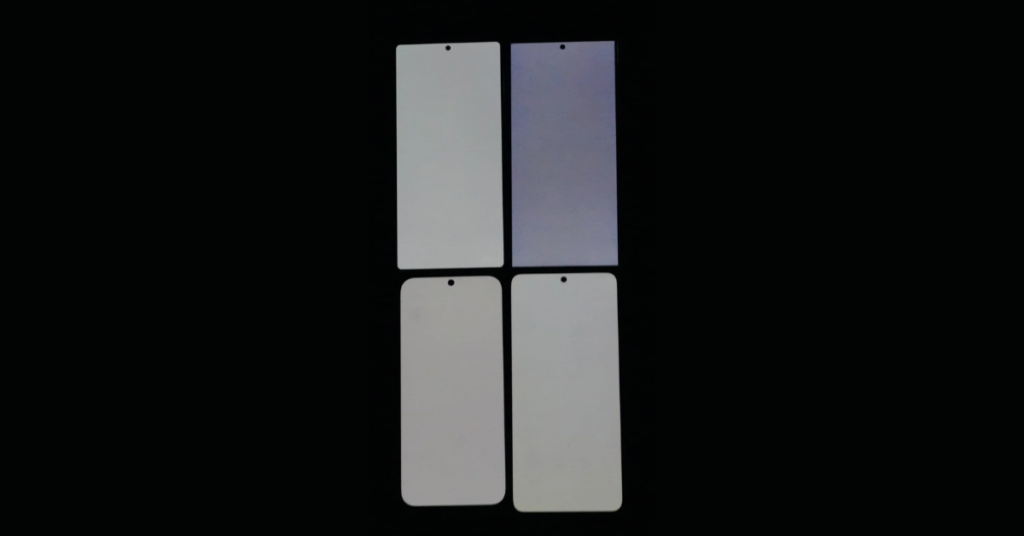Samsung has always been at the forefront of smartphone display technology, setting new standards with each flagship release. With the Galaxy S25 Ultra, the company has taken a significant step forward by addressing the graininess issue that some users experienced with the Galaxy S24 Ultra. This improvement ensures a crisp, clear, and vibrant display even at low brightness levels.
In this article, we will explore how Samsung has resolved this problem, what changes have been made, and how the S25 Ultra’s display sets a new benchmark in smartphone technology.
The Graininess Issue in the Galaxy S24 Ultra
What Was the Problem?
The Samsung Galaxy S24 Ultra introduced an impressive Dynamic AMOLED 2X display with LTPO technology, but some users noticed a grainy or “mura” effect, especially when using the phone at low brightness. This issue made certain areas of the screen appear uneven, particularly in dark-themed applications.
Why Did It Happen?
This problem was caused by:
- Pixel Non-Uniformity: Some pixels displayed slightly different brightness levels, leading to a textured appearance.
- LTPO Display Behavior: While LTPO technology offers adaptive refresh rates, it sometimes resulted in uneven light emission across pixels.
- OLED Panel Variability: Minor inconsistencies in Samsung’s OLED panel production contributed to visible graininess.
How Samsung Fixed the Issue in the Galaxy S25 Ultra
New Display Panel Technology
Samsung has introduced an advanced AMOLED panel for the Galaxy S25 Ultra, which eliminates the graininess seen in its predecessor. This upgrade is hardware-based, meaning software updates cannot fix the issue in the S24 Ultra.
Enhanced Pixel Uniformity
The new S25 Ultra display features improved pixel uniformity, ensuring that all pixels emit consistent brightness. This eliminates the mura effect and provides a flawless visual experience.
Better Low-Brightness Performance
- The contrast ratio has been fine-tuned to maintain clarity even in dim environments.
- The anti-glare coating has been optimized to reduce screen reflections and improve readability.
- The panel’s internal calibration ensures a smoother transition between brightness levels.
Improved Color Accuracy & Vibrancy
- The color calibration has been refined for more natural and vibrant hues.
- Deeper blacks and brighter highlights enhance the HDR experience.
Additional Display Features of the Samsung Galaxy S25 Ultra
1. Higher Peak Brightness
The S25 Ultra’s display now supports an even higher peak brightness, making it easier to use the phone under direct sunlight.
2. More Energy Efficient LTPO Panel
The new LTPO 4.0 technology allows the refresh rate to dynamically adjust from 1Hz to 120Hz, reducing power consumption and extending battery life.
3. Ultra-Smooth Scrolling and Responsiveness
The 240Hz touch sampling rate enhances the device’s gaming and browsing experience, making interactions feel more fluid.
How Does the Galaxy S25 Ultra Compare to Other Flagships?
| Feature | Samsung Galaxy S25 Ultra | Apple iPhone 15 Pro Max | Google Pixel 8 Pro |
| Display Technology | Dynamic AMOLED 2X | Super Retina XDR | LTPO OLED |
| Peak Brightness | 3000 nits | 2000 nits | 2400 nits |
| Refresh Rate | 1Hz – 120Hz (LTPO 4.0) | 1Hz – 120Hz | 1Hz – 120Hz |
| Graininess Issue | Resolved | No issue | Minor issues at low brightness |
Samsung’s superior display technology gives it a clear advantage over competitors in terms of brightness, color accuracy, and smoothness.
Conclusion – A True Display Revolution
With the Samsung Galaxy S25 Ultra, the company has successfully eliminated the graininess issue while introducing a brighter, more efficient, and vibrant display. These improvements make the S25 Ultra’s screen one of the best in the industry, offering users an unparalleled viewing experience.
If you’re looking for a top-tier smartphone with an incredible display, the Galaxy S25 Ultra is undoubtedly a perfect choice.
